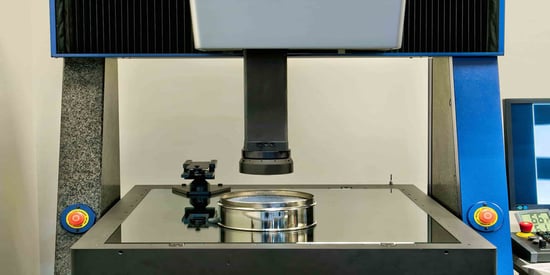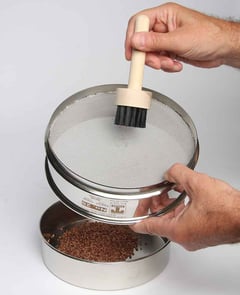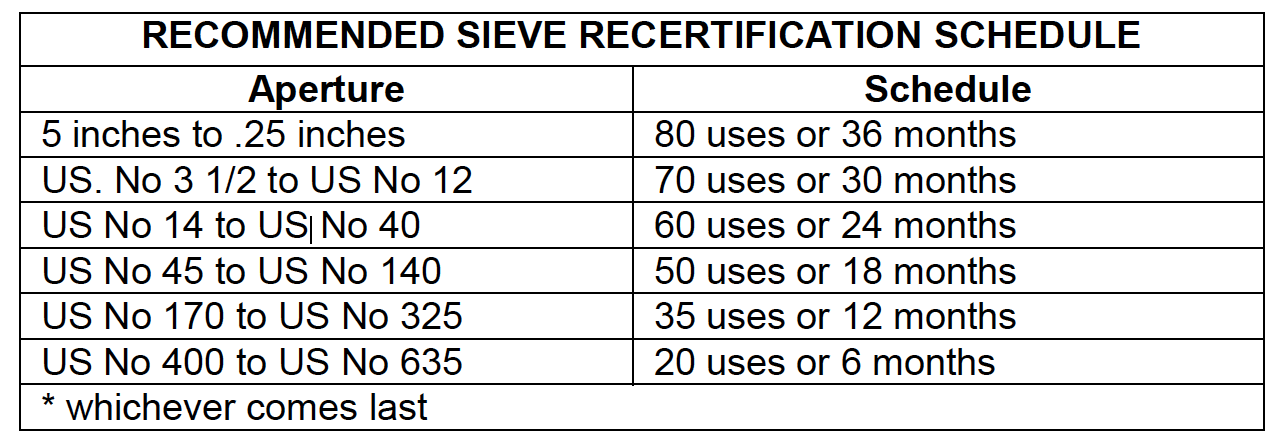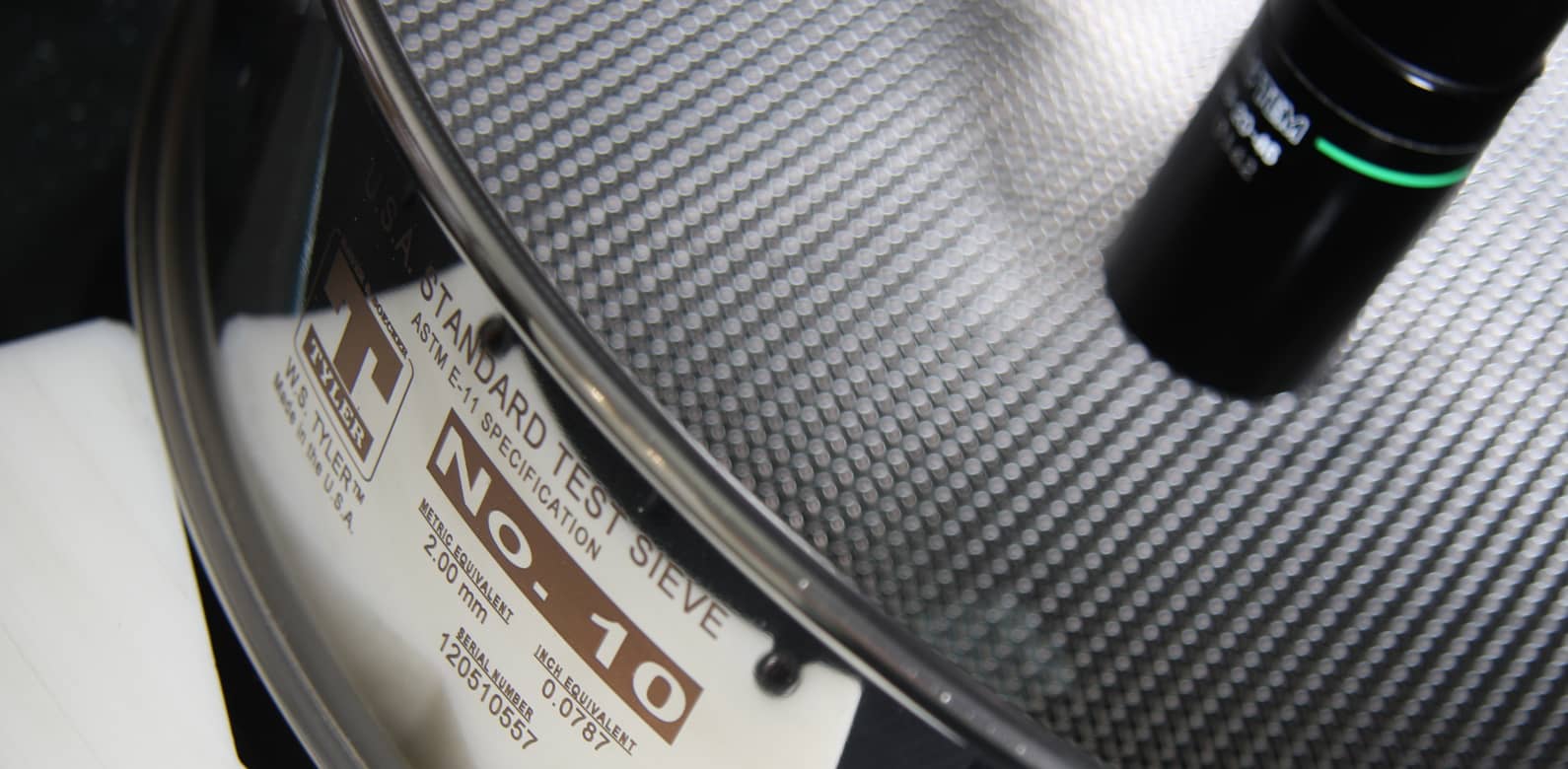What Is a Test Sieve Certification? (Definition, Levels, and Recertification + Video)
Are you overwhelmed by numbers, industry standards, and options?
Whether you are already using test sieves, or you are looking to purchase new test sieves, these may be the certification questions you are asking yourself right now.
We have over 140 years of test sieve experience, and we know that certification can be pretty confusing. We created this article to help break down all the terms and levels that are out there when it comes to sieve certification.
We hope that this article helps you better understand what the process of certification looks like, what your options are, and how often you need to get your sieves certified.
If you have landed on this page but feel you don’t have a good handle on what a test sieve is, you may want to check out our article all about test sieves first.
What is Test Sieve Certification?
A test sieve certification is a statement or verification that a sieve meets or exceeds written standards. It is an assurance that a sieve was manufactured to (and performs to) a certain level of performance.
To certify a test sieve, the sieve is first examined visually to look for tears, wavy mesh, or cracked epoxy.
Next, the sieve is scanned under a microscope that looks at a certain number of openings in the mesh to make sure they are not stretched or clogged while also verifying the wire diameter.

If the sieve openings meet the standards stated in the level of certification you are purchasing, the sieve passes. It is then sent to the customer with a document that states the average opening size, average wire diameter, and how they compare to the nominal measurements as listed in the standard.

The document also includes the information on the measurement tool including its calibration to national standards, giving the document traceability.
This is done to ensure that when you are using the sieve, you are getting the level of results required by your standards.
All levels of certification are done on the mesh inside the sieve after the sieve has been assembled.
What is a Certificate of Compliance?
Although this is not a level of certification, we find that this confuses a lot of the customers. So, before we get into the levels of certification available, let’s talk about a certificate of compliance.
Test sieves are shipped with a certificate of compliance that states that the mesh inside of the sieve was inspected before it was installed into the sieve itself. This gives the user a confidence level of 66%.
There is no statistical documentation supplied with this test because it is more of a standard process to ensure quality rather than a precise measurement like getting your test sieves certified.
A certificate of compliance is NOT the same as a certification. You don’t have to choose to have this test done on your sieve, because it is done on every single sieve before it is assembled.
What are the Different Levels of Certification?
There are two levels of certification that you can purchase. We offer two different standards for each of those levels: ASTM and ISO. These dictate how much deviance is allowed for the sieve to pass or fail certification.
It was previously stated that certification is when a machine scans your sieve to check the condition of the openings. The two levels that you can purchase dictates the amount of openings that must be checked (and pass) during the test.
Level 1: Inspection Grade Certification
This level of certification is done and supplied with a confidence level of 99%. The measurement is done after the mesh is installed into the sieve.
Sieves are inspected to meet either ASTM or ISO standards, serialized, and supplied with traceable documents.
Level 2: Calibration Grade Certification
This level of certification is supplied with a confidence level of 99.73%. The measurement is done after the mesh is installed into the sieve. Twice as many openings are measured at this level than in level 1, statistically providing the higher confidence level.
The sieves are inspected to meet either ASTM or ISO standards, serialized, and supplied with the traceable documents.
What is the Difference Between Test Sieve Certification and Recertification?
This may seem like a no-brainer, but we have found this to be one of the most confusing things about certification. We have already covered that certification is when you need your sieves verified to a certain standard before you use them.
Recertification uses the same process of examining a sieve as certification.
The only difference between certification and recertification is that recertification is done after the sieve has been used for a period of time. This is determined by your recertification schedule.
After you start using your sieves, visible wear should be expected. The mesh may stretch out causing some of the wires to become out of spec, or it could become clogged or damaged during your sieving process.

It is very important that you are following a schedule to determine when your sieves need to be sent back into our lab to be recertified. The sieves are examined and run through the same process as we described earlier in “What is certification?”
If they do not meet the standards needed to pass, you are alerted and able to purchase new sieves that do meet your required standards. We find that a lot of our customers are not aware that if a sieve doesn’t pass the certification test, it cannot be fixed. We do not repair sieves and you will need to purchase a new sieve.
How Do I Know if I Need my Sieves Certified and What Level I Need?
Your internal quality system will determine whether or not you need your sieves certified.
If sieves or particle analysis is an important part of your process, your sieves will need to be certified to a calibration level standard. If sieves are a little less important to your processes, you may only need them certified to the inspection grade standard.
Consistency and accuracy are everything in the particle analysis world. Knowing how to measure your test sieve accuracy is extremely important. Here is how to validate the accuracy of your sieves.
How Often Should I Recertify my Sieves?
We use a general schedule to recommend the frequency in which you should send in your sieves for recertification. The schedule is based on sieve use and the time that has passed since it was last certified.
Of course, the schedule should be adjusted if you are sieving abrasive material, as it could suffer more wear and may fall out of spec sooner.
If you want to schedule your recertification online or are looking for more info on what you need to do before you send in your sieves for recertification, check out our recertification/calibration page.

Final Thoughts
It might seem like an overwhelming amount of information, but there is one main thing we hope you take away from the article if nothing else: Your standards and quality systems tell you everything.
If you are having trouble figuring out what type of test sieve you need, your standards are going to tell you that. If you aren’t sure which level of certification you need for your process, your internal quality system is going to dictate that.
This is important because if you call any company to order sieves or certification services, you need to know the standards of your industry. Without this info, the customer service rep or salesperson isn’t going to be able to provide much help.
As long as you have that info, any customer service team should be able to help ensure you have the right products and the right certification services set up for your process.
If you have reached the end of this article and you still have other questions about certification or sieves that you need answers to, feel free to contact us, and our team will be happy to help.



